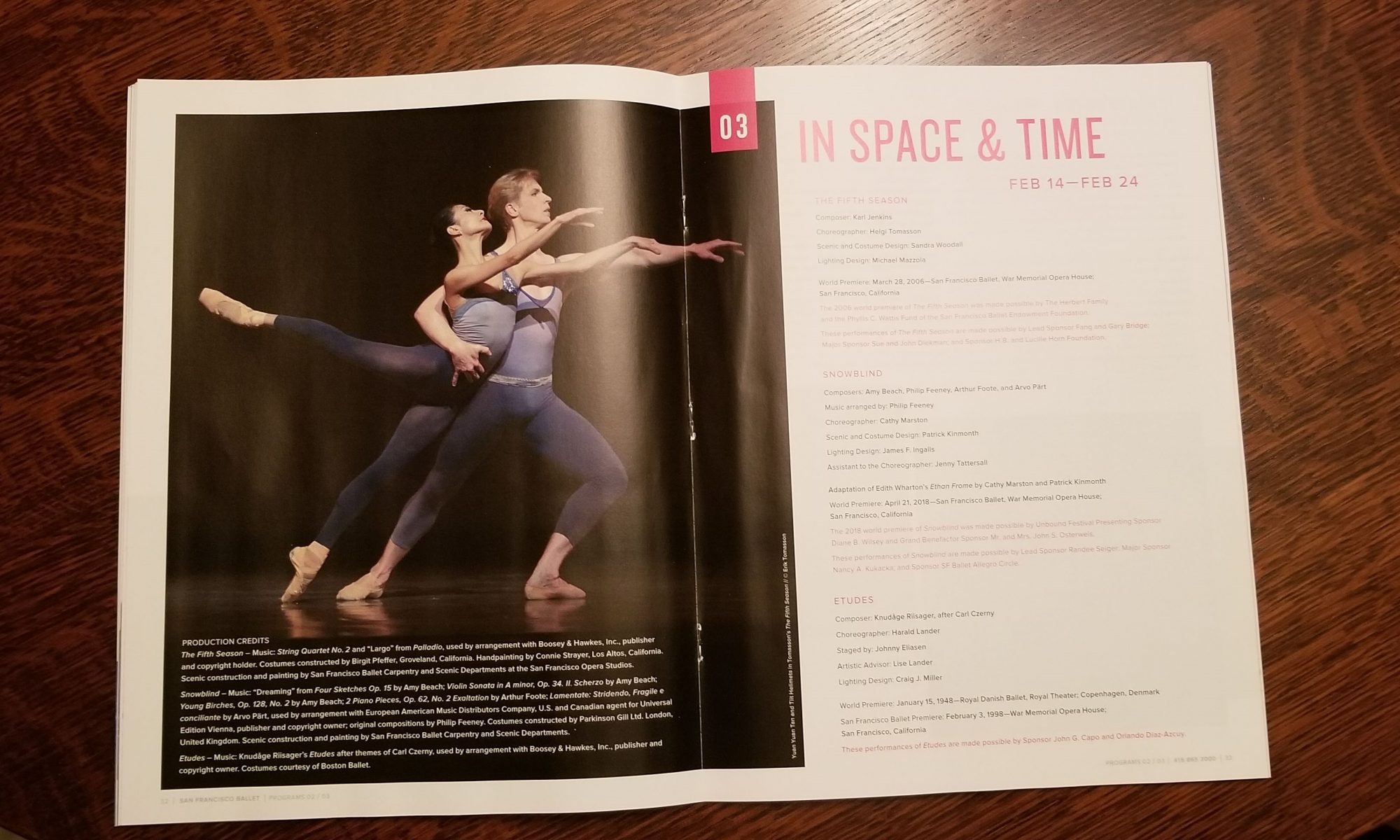In this installment of Ballet Season 2019, I will tell you about San Francisco Ballet program 3, In Space & Time. This was a mixed bill of three works, one neoclassical, one narrative, and one classical.
The Fifth Season
The first piece was The Fifth Season (2006), choreographed by SF Ballet artistic director Helgi Tomasson. Helgi discovered the music of composer Karl Jenkins in 2005 and was inspired to create a ballet using it. This piece features six movements with six principal dancers in different combinations and a small corps de ballet of eight dancers. The partnering is for the most part interesting and innovative. Some of the movements are interpretations of traditional ballroom dances such as the waltz and the tango which I really enjoyed.
The highlight of this piece was seeing our favorite prima ballerina, Yuan Yuan Tan on stage. I don’t think that we saw her at all last season. The other leading ladies in this piece, Wona Park (a soloist) and Mathilde Froustey held their own next to Yuan Yuan, an impressive accomplishment.

Snowblind
Next in the program was a success from last season’s new works festival, Snowblind (2018). Choreographer Cathy Marston used Edith Wharton’s novella Ethan Frome as the plot for this narrative work. I’m not familiar with the source material and I didn’t find the any of the characters particularly sympathetic, but Cathy was a very efficient storyteller. She presented well developed characters and a compelling dramatic arc in a short period of time. Her innovative use pantomime and the corps de ballet was highly effective in furthering the plot and enhancing the drama. My favorite element was the way that she turned the corps de ballet into a blizzard. They were fast, unpredictable, and instantly recognizable as a natural phenomenon. Think Waltz of the Snowflakes from the Nutcracker only dangerous and menacing.
Etudes
Etudes (1948), by Royal Danish ballet choreographer Harald Lander closed the evening. This is what I would describe as a very academic ballet. The piece is based on the structure of a ballet class, beginning at the barre and progressing through all of the exercises in a traditional class. These days it can be really refreshing to see a ballet that uses the traditional dance vocabulary so explicitly.
The Danish ballet style is very upright, athletic, and precise, but effortless and light at the same time. These qualities are not the strengths of the San Francisco ballet and I felt that the dancing lacked the sparkle that would have made such a literal ballet demonstration truly successful.
There were bright points in the performance. I was tickled by the extensive mazurka variation that even included a brief czardas solo. This is the kind of thing that you are only going to see in the Danish style. But by far, the highlight of the piece was my beloved Aaron Robinson who again demonstrated that he is the only member of the San Francisco ballet who can actually leap.
It was a fun night out but not a can’t miss program.

